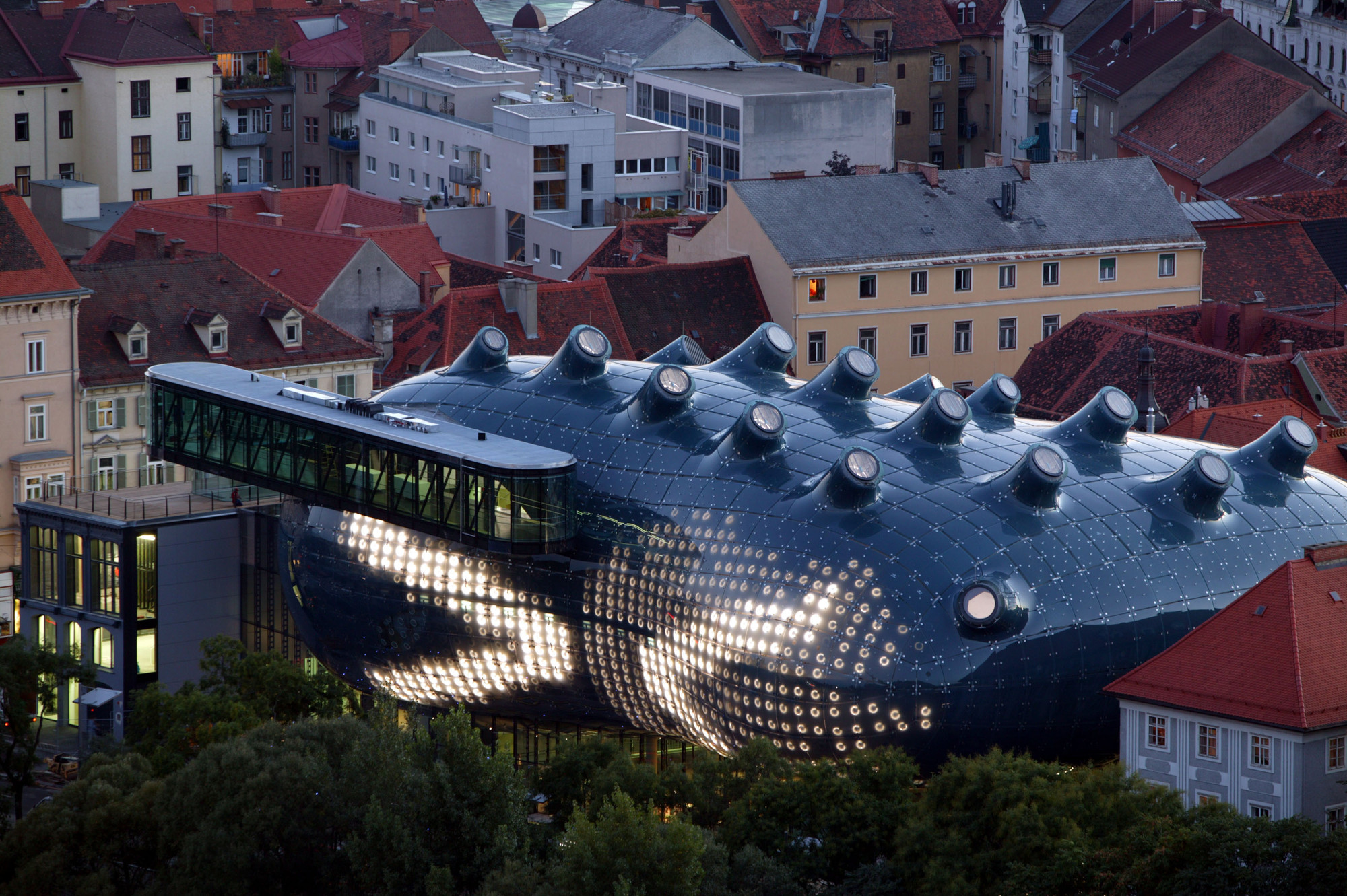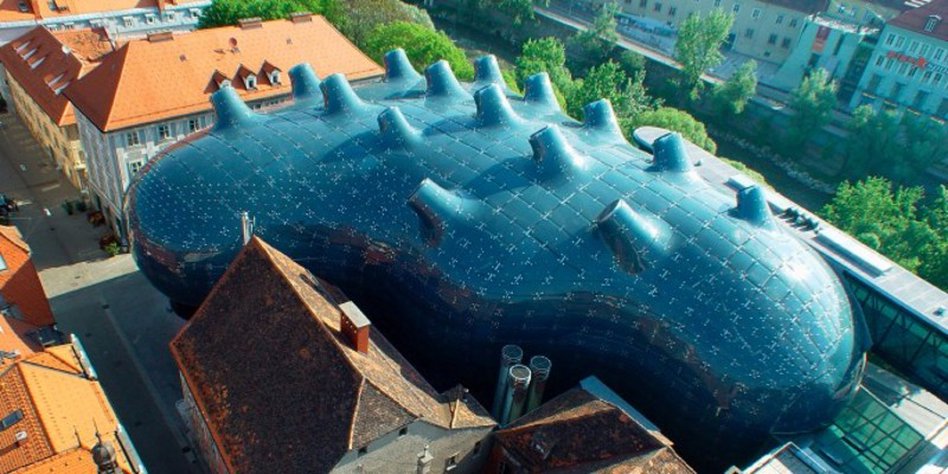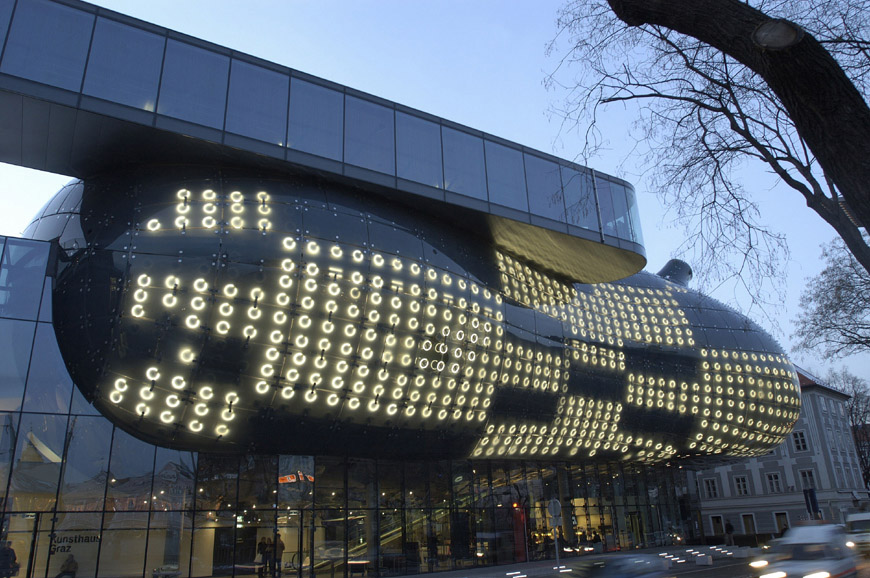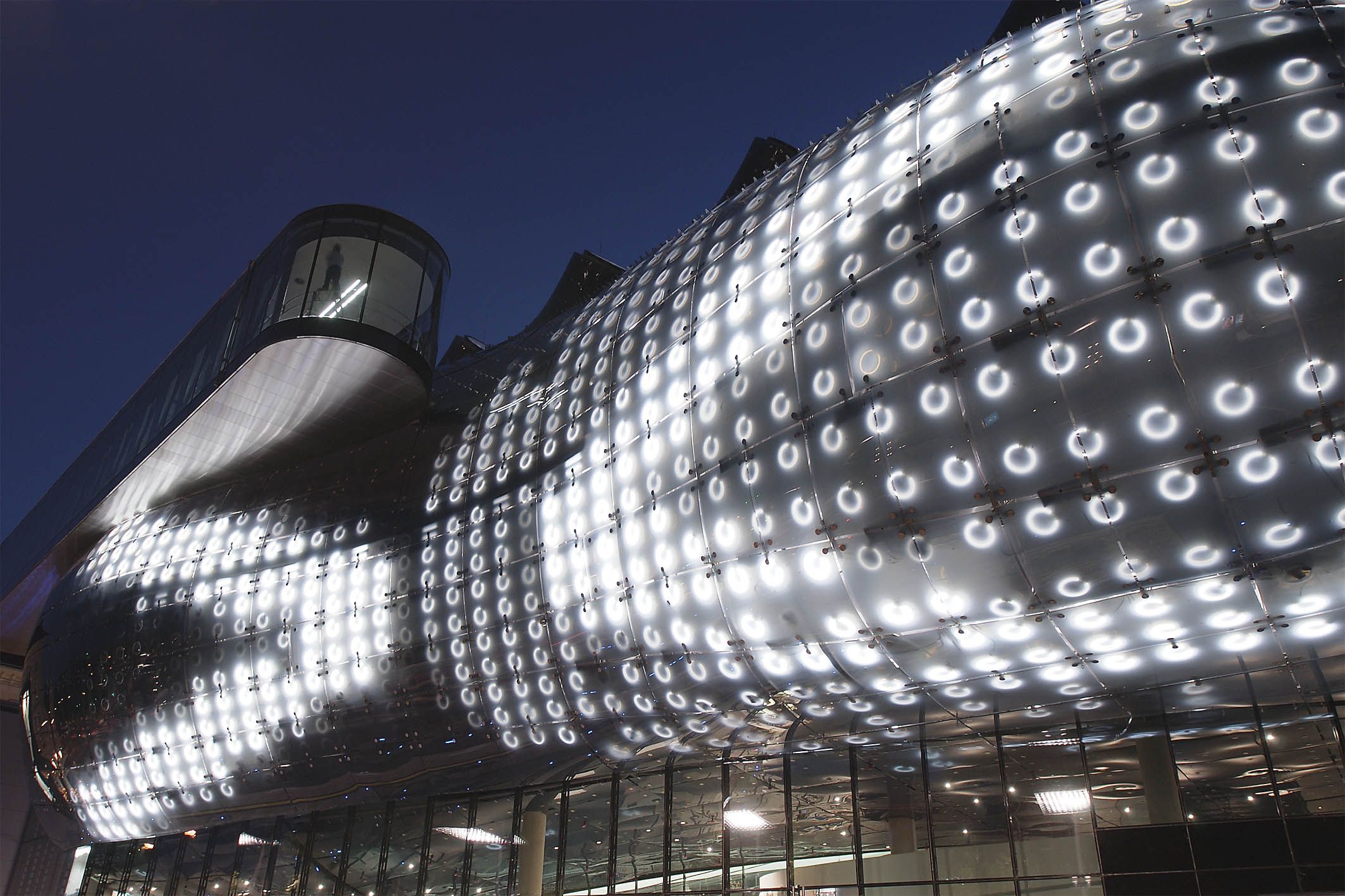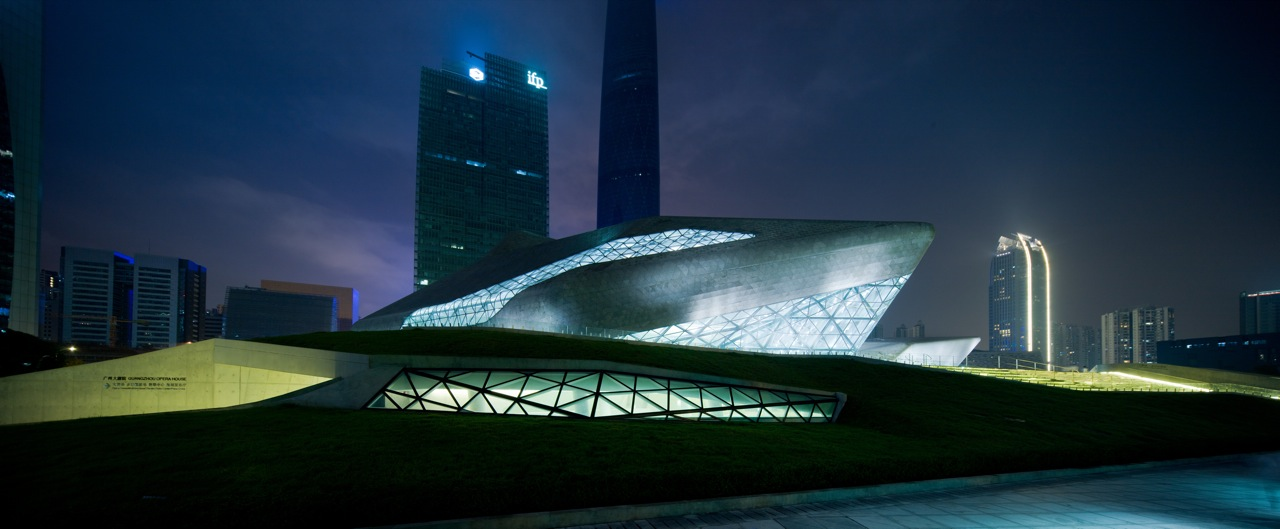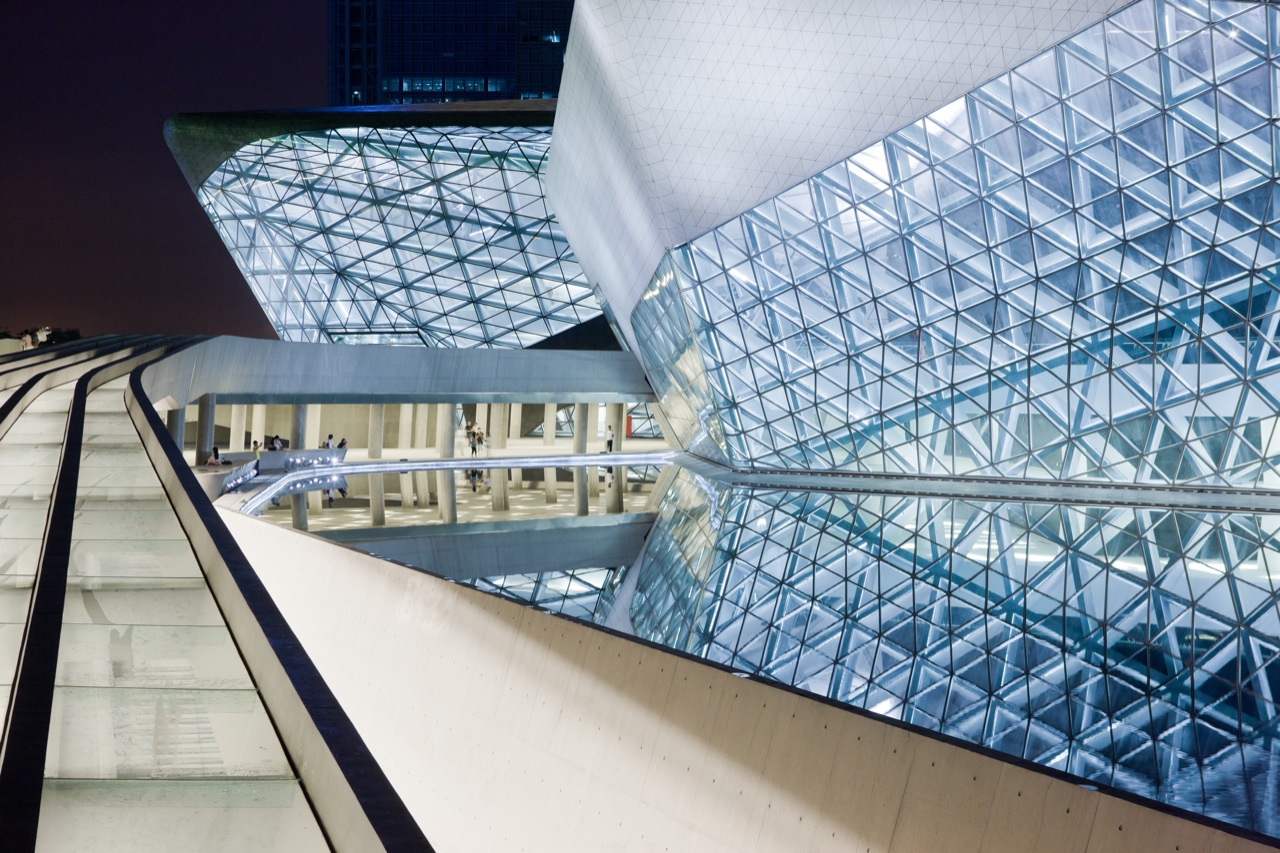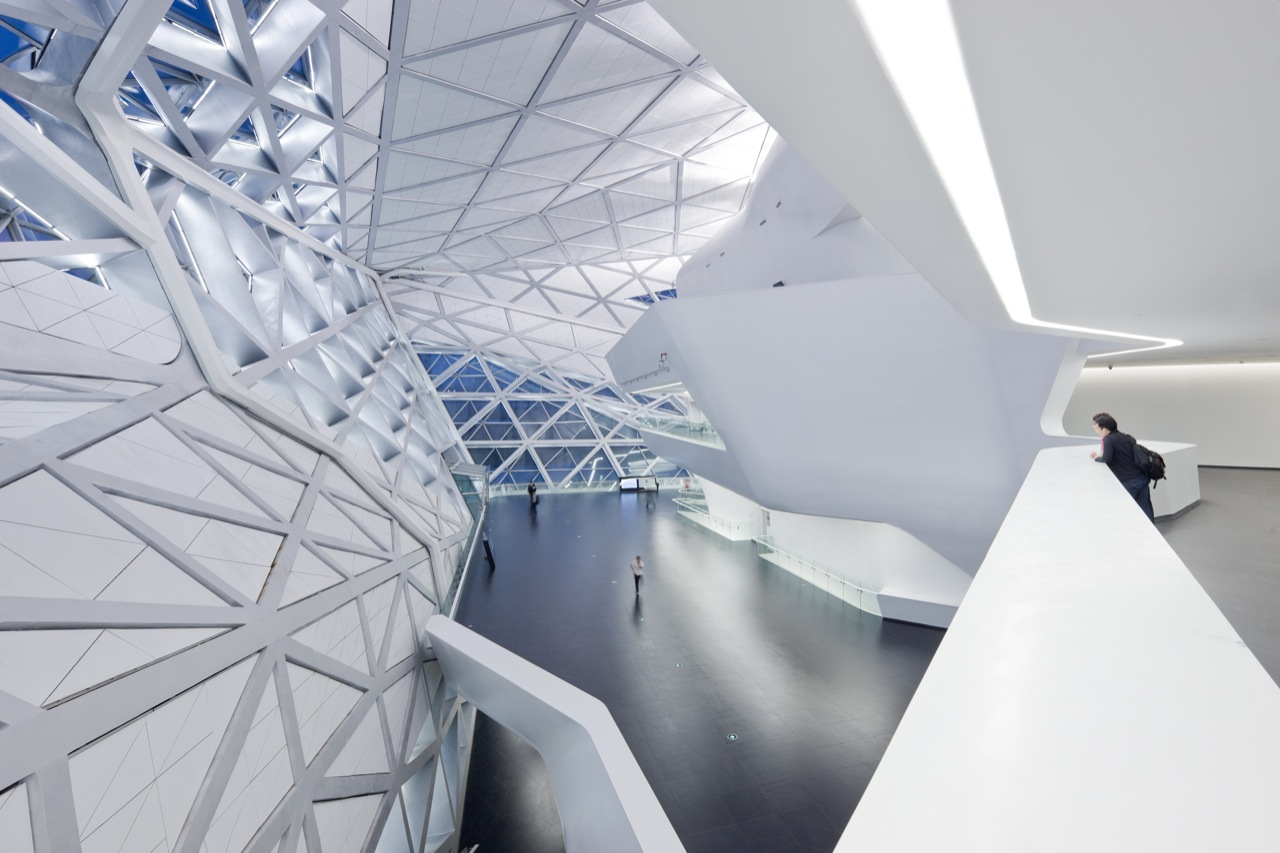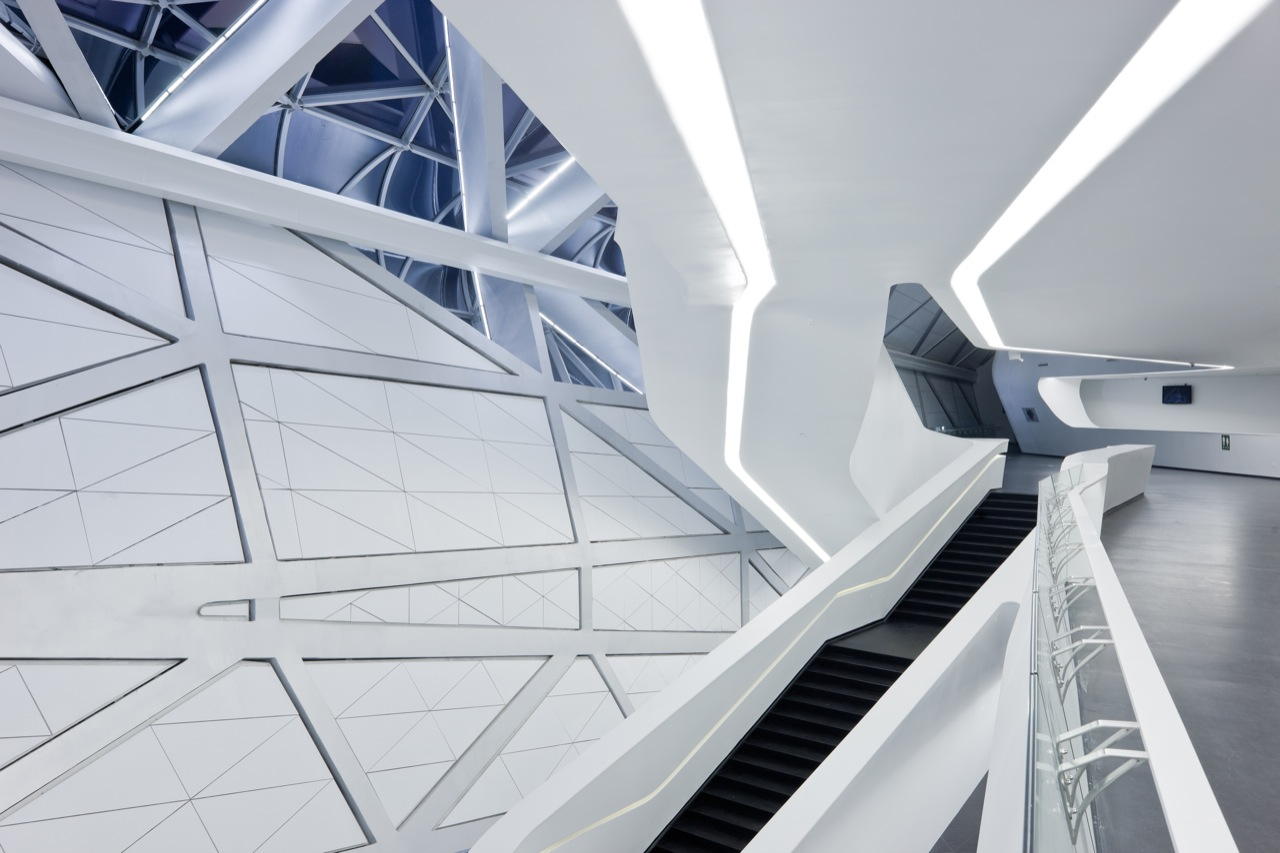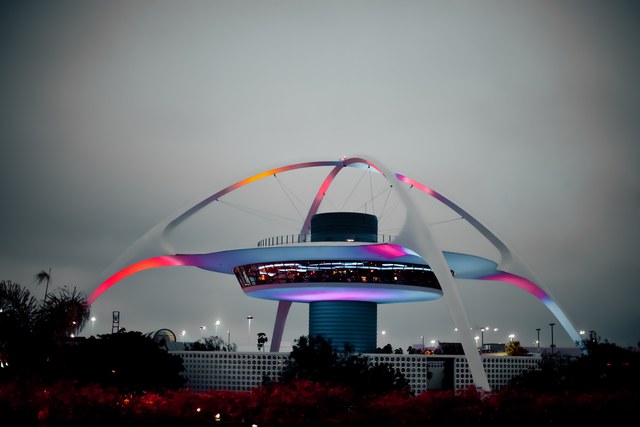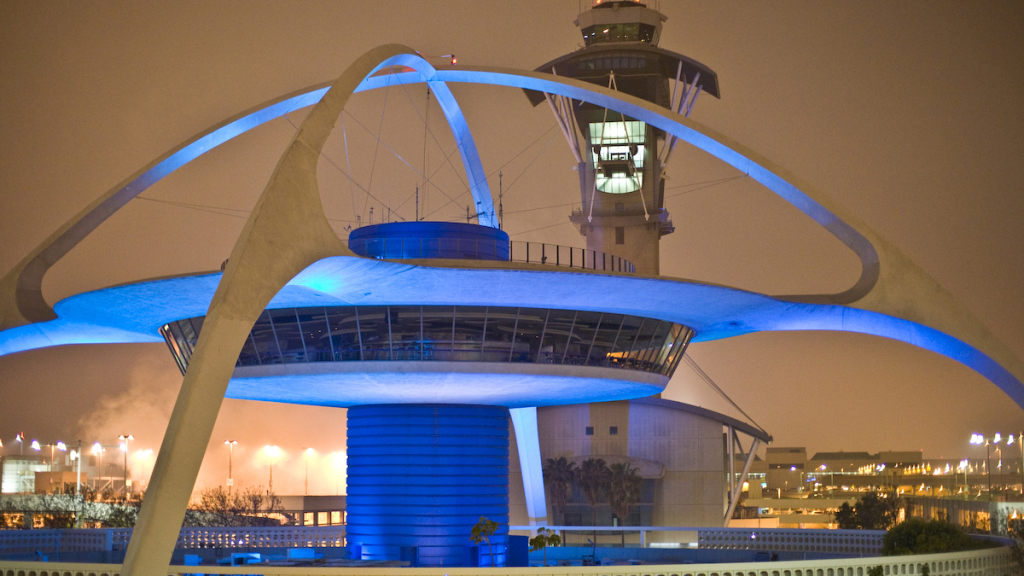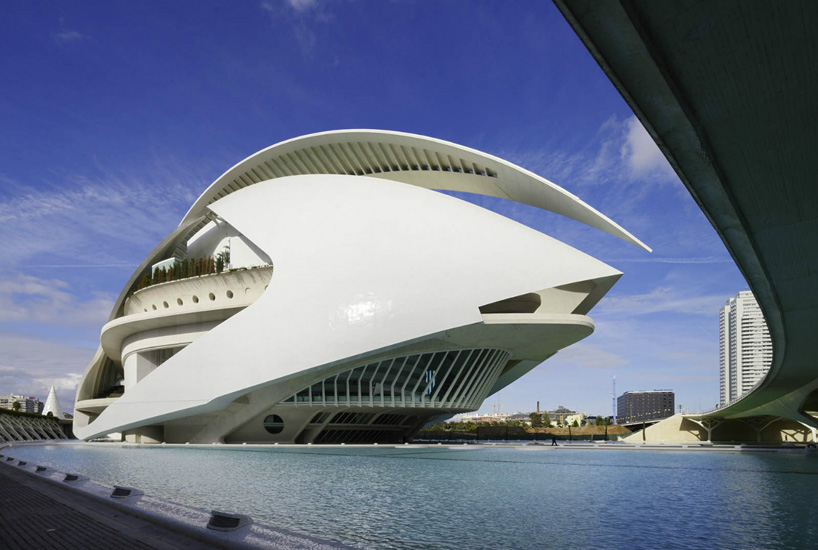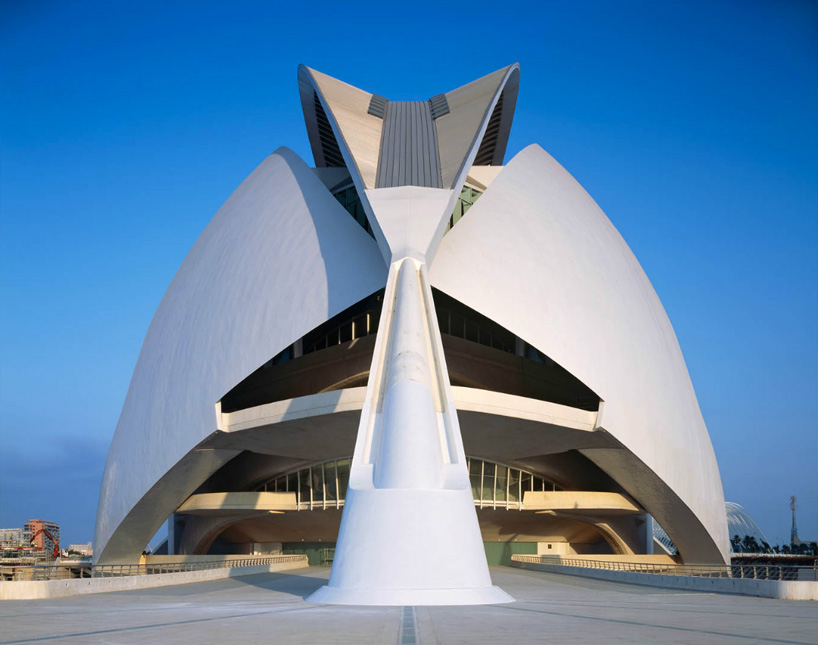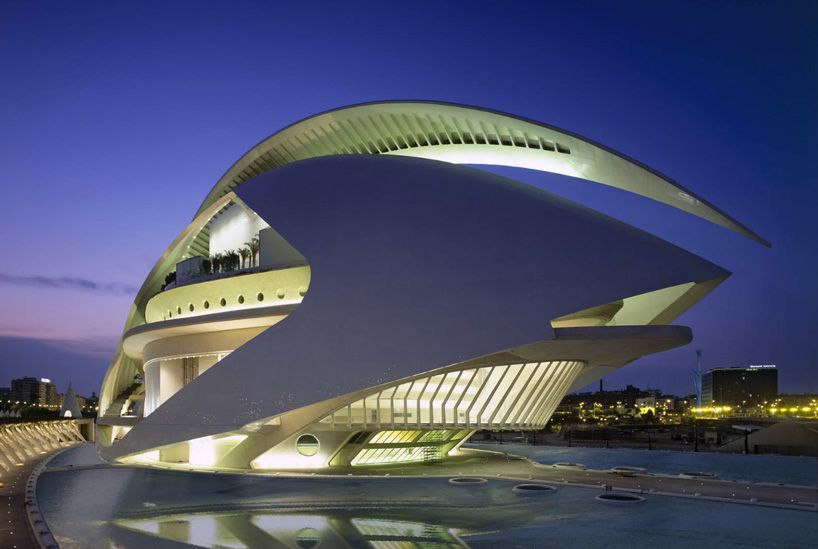Kunsthaus Graz by Peter Cook and Colin Fournier, Graz, Austria
Another prominent example of ‘blobitecture,’ the Kuntshaus Graz was conceived by its architects as a “friendly alien” that could act as a bridge between the wealthier east bank of the river Mur and the impoverished communities on the other side. Housing international collections of modern and contemporary art from the 1960s to present day, the Kunsthaus Graz has become a symbol of the city of Graz, Austria since its completion in 2003.
Guangzhou Opera House by Zaha Hadid, Guangzhou, China
The contoured profile and twin boulder design of the Guangzhou Opera House in China opens access to the riverside and dock areas of the city of Guangzhou to produce a dialogue between the existing city and the new district of Zhejiang. Envisioned by Zaha Hadid as pebbles in a stream smoothed by erosion, the building contains a 1,800-seat auditorium as well as a 400-seat multifunctional hall for performance art, opera and concerts.
Theme Building, Los Angeles
Deemed one of the top 5 Googie buildings in Los Angeles by Architectural Digest, the Theme Building at LAX is topped by a flying saucer-shaped restaurant. The iconic Space Age structure was initially designed in 1959 by James Langenheim of Pereira & Luckman. ‘Googie,’ named for a now-demolished coffee shop in West Hollywood, refers to a post-World War II style that emerged in Southern California and hit its peak in the 1960s. Few of these structures are still standing, but the Theme Building was retrofitted to withstand earthquakes in 2010.
Palau de les Arts Reina Sofia (Opera House) by Santiago Calatrava, Valencia, Spain
The helmet of a giant alien fighting in outer space seems to have fallen to Earth. Santiago Calatrava’s Palau de les Arts Reina Sofia has become one of his most iconic buildings, an urban landmark for the city of Valencia consisting of two auditoriums and a chamber music hall.
